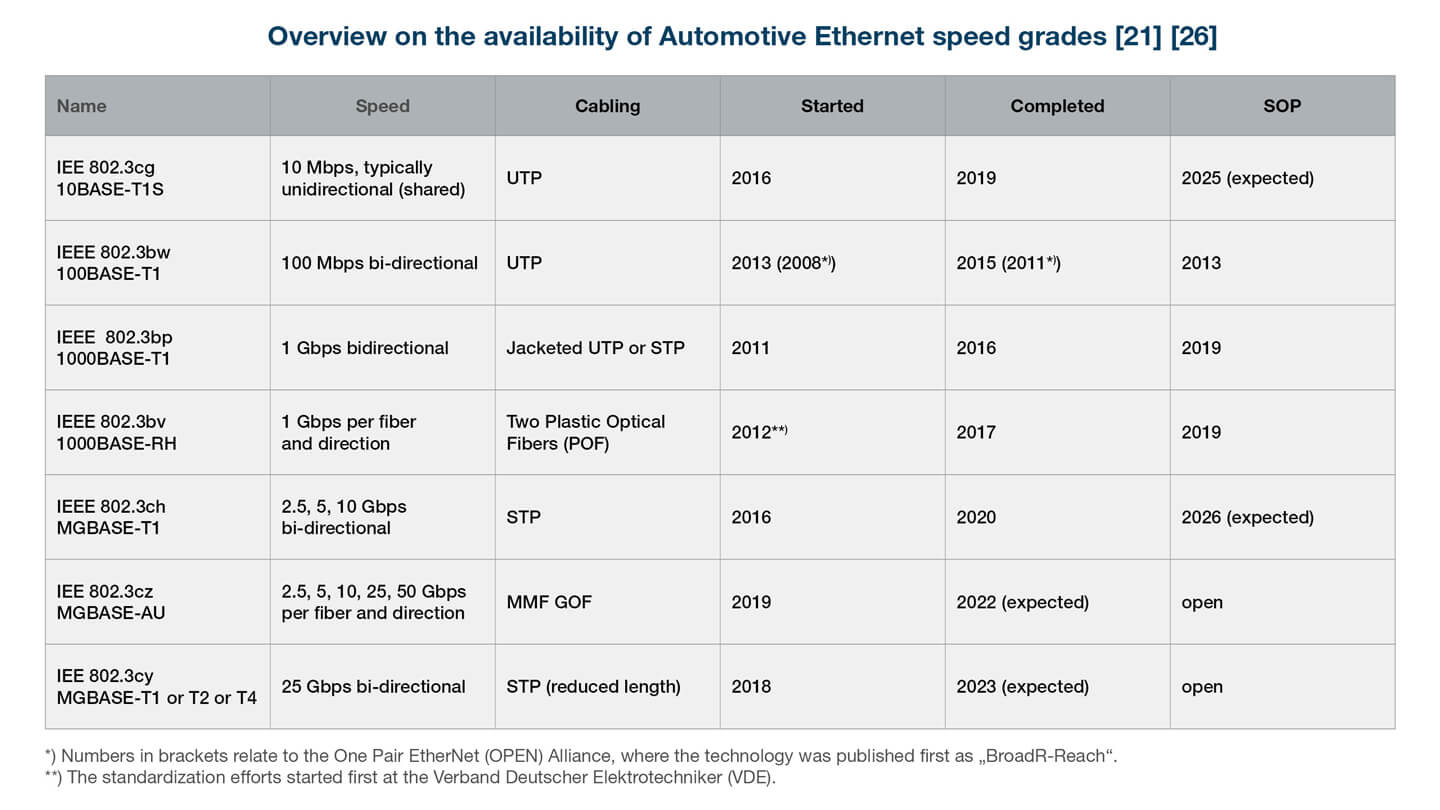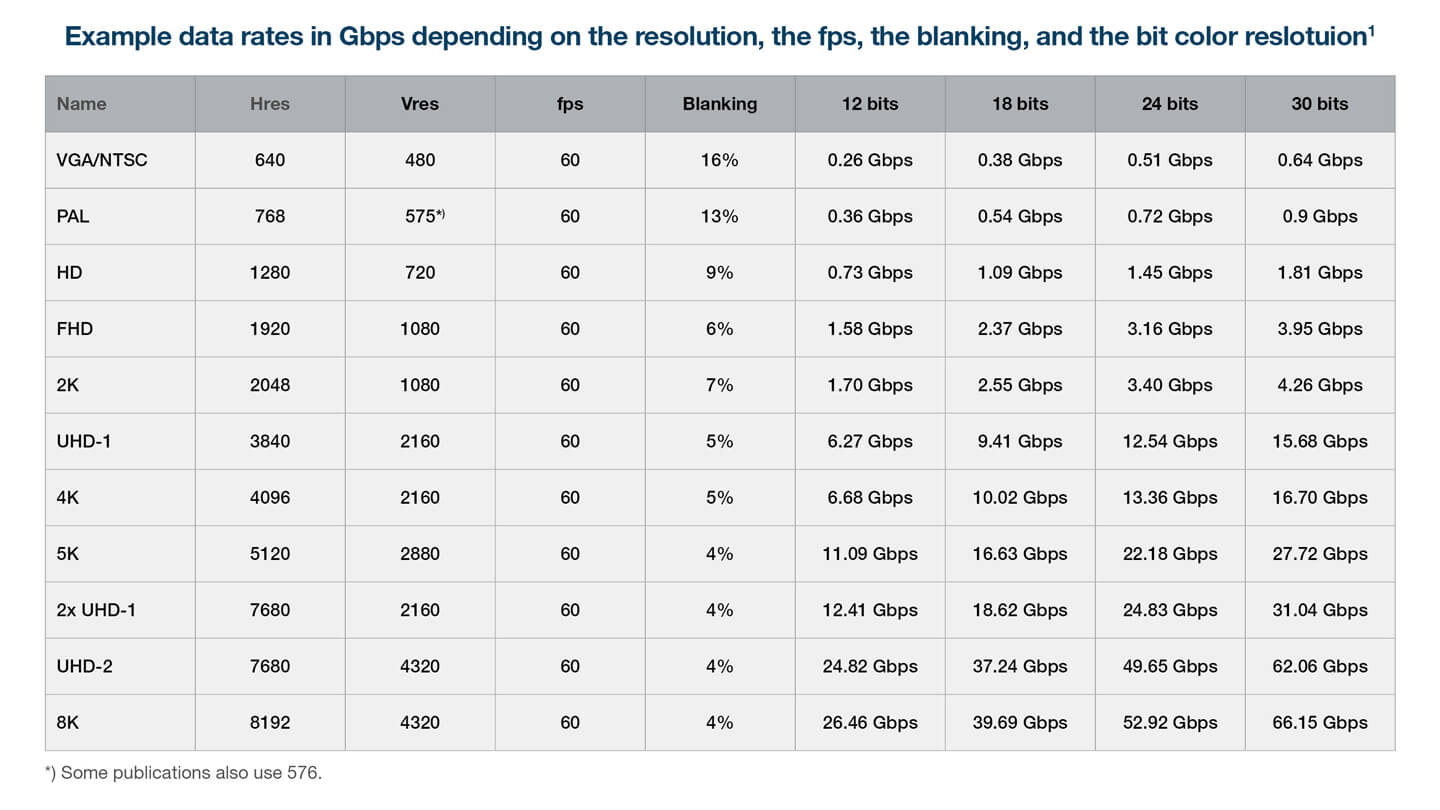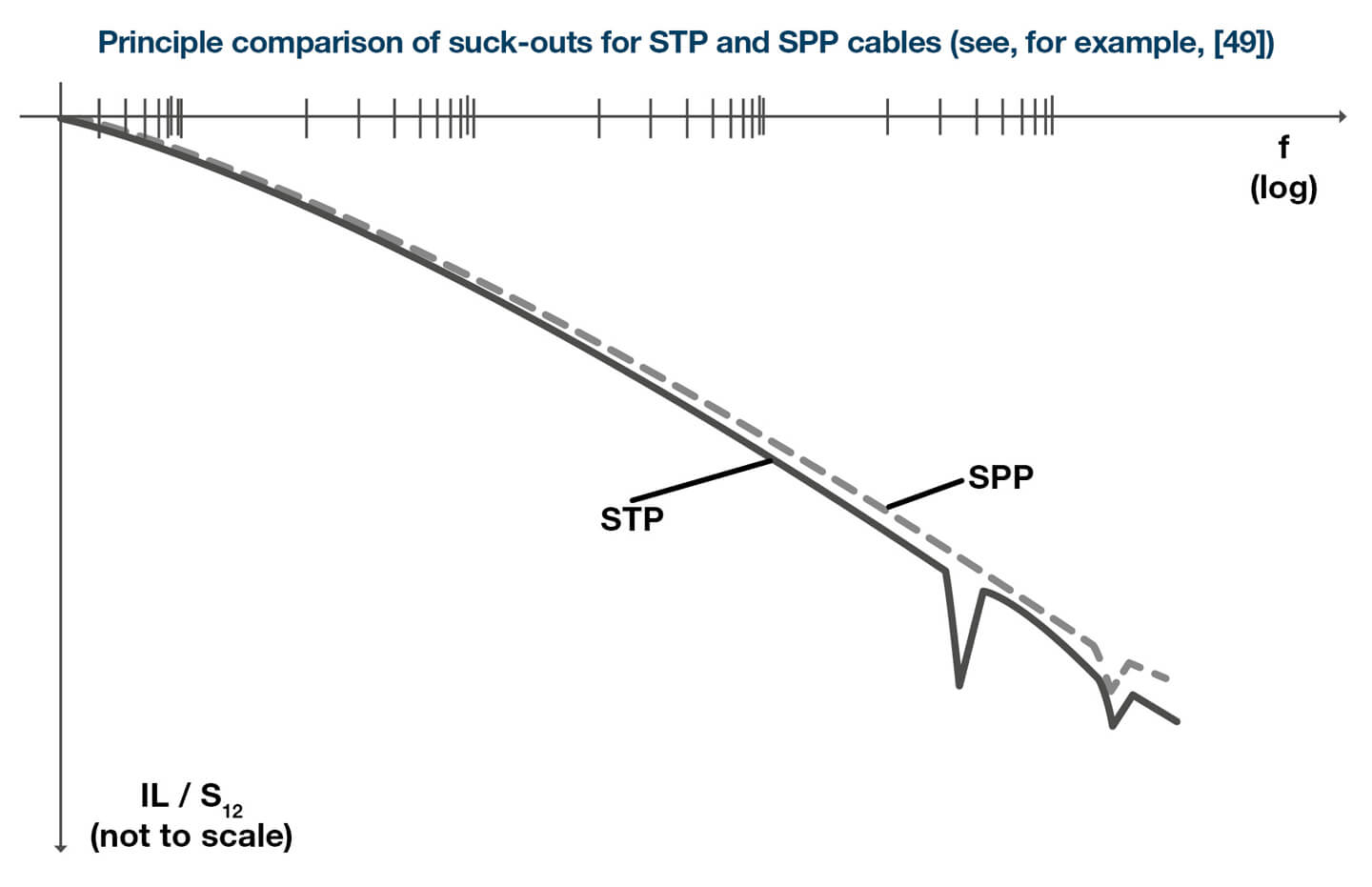Looking at the mega trends in the automotive industry such as ADAS, autonomous driving or the mobile office, it is clear that demands for high-performance automotive on-board networks are on the rise. On the one hand, this affects data rate requirements, and on the other, it affects the number of cables required to interconnect the necessary sensors, cameras, displays and central and zone computers. So, the question arises as to how to design the transmission channel so that it meets these requirements and ensures that these connections are suitably efficient.
From the data center to the vehicle
Today, data is already transmitted in data centers at rates of up to 1 Tbps. This is feasible because ideal conditions have already been created in such buildings. However, to transmit high data rates in vehicles, new, more robust solutions need to be developed that are able to withstand the adverse conditions. Ethernet technology was originally chosen for this purpose in the automotive sector, where it is used in a modified form as two-wire technology (electrically via copper). Through optimization with chips, connectors and cables, it will be possible, in the future, to transmit up to 25 Gbps. At the same time, optical data transmission has also become established in data centers and this will also be available for automotive applications in the future.
The development of standards and specifications for the automotive industry
Data transmission systems and the related specifications for the automotive industry are devised by standards committees in cooperation with car suppliers, tier level suppliers and chip manufacturers. One such well-known committee is the IEEE (Institute of Electrical and Electronics Engineers) which focuses on the needs of the future. The automotive industry is increasingly engaging with these committees because technologies such as Ethernet are also used in cars in a modified form. On average, it takes 6 to 8 years from the time that the working group first comes together to develop the new standard to the start of production out in the field. The following table provides an overview of the standards according to IEEE committees, and their current status.
1) Source: Matheus/Kaindl. p. 18
From this, it can be seen that standard IEEE 802.3ch has specified data transmission of up to 10 Gbps via a copper wire solution, enabling car manufacturers to launch production from 2026 onwards. In contrast to the classical Ethernet standard, transmission via a two-wire cable has been specified for the automotive area. For data transmission of up to 25 Gbps (IEEE 802.3cy), the standard is expected to be completed in 2023, however the scheduled production launch has not yet taken place. The standard based on optical cables with a data transmission rate of up to 50 Gbps was adopted in spring 2023. Development of the standard for the physical layer was launched in the middle of the year by the Open Alliance.
Applications – what do I need 25 Gbps (or more) for?
The main drivers of ever higher data rates are video applications (cameras, displays) and zone architecture. Particularly where displays are concerned, detailed views and concrete application possibilities already exist. The number and resolution of displays and cameras will increase dramatically in the future. Taking displays on their own, the number could increase to up to 6 units in one car! In autonomous vehicles, for instance, in addition to the driver’s display, central display and passenger display, several displays will also be mounted in the rear area in order to create an office on wheels. It will be possible to pull them down for use and then conceal them back in the roof lining, when not required. In particular, an 8K display with a minimal resolution already requires a data transmission of 25 Gbps. Both 3D displays and high-resolution head-up displays are important features and can be programmed flexibly and used as a speedometer in retro style or as a classical head-up display.
In addition, the integration of many cameras that is envisaged for autonomous driving will also require the transmission of high data rates in real time. It is not yet known when these systems will go into production. The following table shows possible data transmission rates depending on the display resolution which can also be used for camera applications (raw data).
1) Source: Matheus/Kaindl. S.28
Based on the zone architecture that will be deployed in future vehicle platforms in preparation for autonomous driving, the number of cables in on-board networks or in vehicles is set to increase due to the rising number of sensors and cameras. For example, if we consider vehicles with autonomous driving functions, the number of sensors required could increase to over 100! However, it’s not only the number of sensors that’s an important parameter, but also real-time transmission, as higher latency times are not acceptable for autonomous applications. Another area of focus is the preparation of video signals for cameras and displays which are currently used in HD quality, but in the future will require significantly higher resolutions in order to ensure accurate recognition of road users and obstacles, etc. Expert groups are already talking about resolutions of up to 8K for these applications – which will seriously increase the data rates to be transmitted. Depending on the refresh rate, this can increase to over 25 Gbps.
Another aspect that accompanies the issue of autonomous vehicles is the fact that it will be possible to develop the “self-driving office” which will require a fast internet connection through the use of 5G or 6G. This too will contribute to the overall increase in data rates.
The German government already paved the way forward in 2021 when it established a law for level 4 fully automated driving. The trailblazers of this technology will primarily be the luxury models of car manufacturers.
Technical solutions for transmitting 25 Gbps
A data rate of 25 Gbps can be transmitted in two ways: via a copper cable or via fiber optic cables.
Common and readily available Ethernet transmission systems use copper-based connector systems which, in the future, will be able to transmit data at a rate of up to 25 Gbps with the aid of a data pair (special bulk stock). Different types of copper-bound cables exist: the shielded twisted pair (STP) and the shielded parallel pair (SPP). These two types of cable have different structural designs.
With the shielded twisted pair, a pair of wires is twisted together at a certain distance from each other and surrounded by a shield.
With parallel pair bulk goods, the pair of wires is run in parallel as far as possible. With this design it is possible to cover a higher frequency band in order to suppress the so-called “suck-out” effect (drop/abrupt increase in insertion loss at certain frequencies) in the highest frequency range possible. If this succeeds, a transmission of 25 Gbps can be achieved. This type of cable is currently still in the development phase at potential manufacturers.
1) Source: Matheus/Kaindl. S.143
In addition to copper-bound bulk goods, it is also possible to achieve data transmission speeds of up to 50 Gbps via fiber optic cable. The development of transceivers and associated connectors and cables is currently in full swing. However, a standardized interface with connectors has not yet been defined.
Advantages and disadvantages, and technical obstacles of the different solutions
One advantage of copper-bound systems is that, in the automotive sector, they use standard Ethernet interfaces which have already been defined and which enable up to 25 Gbps. The basis for this are special cables, which must be handled very carefully with respect to lengths, bending radii, etc. Taking a closer look at the standard for transmitting 25 Gbps, it can be noted that 2 wire sections are defined for a data rate of over 25 Gbps – this is referred to as “multi-laning” in professional circles. The international committee responsible for the specification of data transmission, the IEEE, founded the working group IEEE 802.3cy for the transmission of 25 Gbps in the automotive sector. This committee is working with companies from the industry on specifying a transmission channel. Due to the physical limitations of copper-based data transmission, a restriction in the lengths of the cable is necessary and this has been specified to a maximum defined length of 11 meters with 2 in-lines. This differs to the preceding standard IEEE 802.3ch where the transmission channel was specified with 15 meters and 4 in-line connections. What’s more, interference factors such as EMC and ground loops must be taken into account and reduced or avoided through the use of suitable solutions.
On the other hand, optical data transmission via fiber optics can be used for higher data transmission rates of over 50 Gbps over a single cable. For optical data transmission, the IEEE founded the IEEE802.3cz working group in order to specify the maximum cable length for the transmission channel. This was defined at maximum 40 m with 4 in-line connections. Optical solutions have a negative image dating back to the days of polymer optical fiber (POF) technologies, as handling them is reputed to be problematic due to their bending radii. Therefore, in order to meet today’s strict requirements for optical multi-Gigabit transmission, the use of fiber optic technology is necessary as it allows very small bending radii and has a high mechanical strength. As the transmission system is still under development, the corresponding connectors and cables are also still in the development phase. However, the results are very promising so far.
What are the consequences for the on-board network of the future?
Considering all these influences, it becomes clear that the on-board network of the future needs to adapt as these large quantities of connections to applications (sensors, displays, cameras, etc.) cannot be accommodated in the vehicle in the same way as before. Many working groups dealing with this topic have come to the conclusion that the number of individual control devices will have to be dramatically reduced and, in the process, so-called “zone architecture” will need to be adopted. This will have a considerable influence on the quantity, length and performance of cables in on-board networks.
How is MD preparing for these developments?
MD ELEKTRONIK has been focusing on innovative technologies for many years in order to develop suitable connectors and cables to meet these new requirements. Cooperations with partners from the chip industry are also being stepped up along with intensive collaboration with tier 1 suppliers, in order to tailor the technologies of the future to their requirements. In addition, MD is developing and implementing its own production processes and technologies to ensure the necessary flexibility, precision and high volumes at its global production sites.
Summary and conclusion: with established technologies of up to 25 Gbps and new innovations beyond
Applications for data rates of over 25 Gbps are already being developed or are on the verge of being launched. In an initial approach, copper-based solutions are planned for these applications as they are already widely available and generally suitable for use for up to 25 Gbps. Depending on the application, it is advisable to check whether it will be possible to use them for critical applications such as in the EMC area. If the data rate is over 25 Gbps, it should be checked whether an alternative type of transmission would be more appropriate.
One alternative, for example, is optical data transmission which offers many important advantages in the critical environment of the vehicle. However, its technology has yet to be developed for serial production. MD ELEKTRONIK is actively involved in technologies of the future in its endeavor to offer the right solutions.
As it is often difficult to define the advantages and disadvantages of the respective transmission systems and different technologies are worth considering depending on the application, we are delighted to be able to offer you the option of a personal consultation for your application.
Contact our Sales Team now for more information!
Sources:
1) Matheus, K./Kaindl, M. (2023): Automotive High Speed Communication Technologies. Munich: Hanser Verlag.





